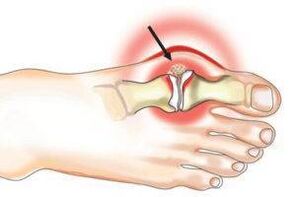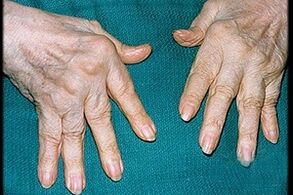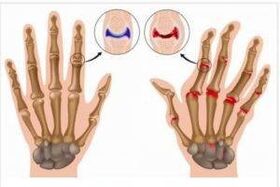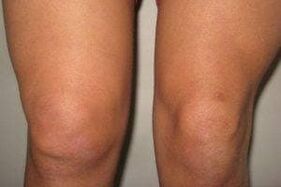Many people do not always understand the difference between arthritis and arthrosis due to the similarity of the names.Both diseases are associated with the joints, but the causes, symptoms, diagnosis and therefore treatment are fundamentally different.It is very important to determine the nature of the disease at the initial stage in order to begin adequate treatment.
Arthritis, arthrosis and their effects on joints
To begin proper treatment of a joint, you must first determine what type of disease it is susceptible to.And to do this, you need to understand for yourself what the difference is between arthritis and arthrosis.
Both diseases affect the joints, but have different symptoms and causes.
What is osteoarthritis

Osteoarthritis sooner or later affects about 10% of the population, manifesting itself very often with age.Osteoarthritis is a deformation of the joints and a decrease in their mobility.Its correct name should be considered osteoarthritis.
The main symptoms are pain during movement and loss of mobility, the range of motion of the affected joint decreases, and an unpleasant, dry, sharp crunch appears during movement.Deformation can also be seen in osteoarthritis.For example, it is very easy to notice a change in the shape of the knee joint.
Osteoarthritis can be detected in the early stage.The diagnosis is complicated only by the negligent attitude towards health on the part of the patients themselves.Pain at the initial stage appears only with exertion, so many do not attach importance to it, which aggravates the disease and complicates treatment.
Arthritis and its symptoms

While osteoarthritis is a disease that only affects the joints, arthritis is often contagious and affects the entire body.Such diseases are one of the manifestations of the general condition of the body.It is much more difficult to treat, as well as diagnose.Joint pain is accompanied by swelling and inflammation;the pain does not disappear, but intensifies, much faster than in arthrosis.Infectious arthritis affects not only cartilage tissue, but also negatively affects the heart, kidneys and liver.Although arthritis is about 5 times less common than arthrosis, it is much more difficult to treat, represents a great danger to the patient's life and its causes can be different.
The main symptoms of arthritis are:
- high temperature;
- skin inflammation, psoriasis;
- general weakness of the body;
- eye discomfort;
- discharge from the genitals;
- chills, increased sweating.
The skin around the joints is especially hot and swollen.
How does arthritis differ from osteoarthritis in the nature of the disease?

To better understand the causes of these diseases it is necessary to understand their nature and classify them.
All joint diseases can be divided into two groups: inflammatory and dystrophic processes.
To determine the nature of a disease, the symptoms of which are similar to another, it is important to diagnose and determine the cause of a particular process in the body.
The main problem with both diseases is the imbalance in the joints between the destruction and repair processes.The stronger the imbalance, the faster bone tissue is destroyed, which manifests itself at the cellular level with a lack of oxygen and nutrition for them and poor production of healthy components of bone tissue.
Most often, the process goes unnoticed, and when the number of dead cells exceeds the norm, pain appears.Therefore, the body tries to “complain” about excessive stress and asks for help.
Dystrophic diseases
Most often, such diseases have characteristic names that have the same ending: arthrosis, osteochondrosis, ligaments, osteoarthrosis.Such diseases appear with age or with constant physical activity.Football players, for example, often suffer from arthrosis of the knee joint at a young age.Most athletes are susceptible to diseases of the knee joints.
Joints exhibit painful symptoms due to thinning of cartilage tissue, called degeneration.Such diseases develop due to the general aging of the body, sedentary lifestyle and the infectious nature of diseases that can accompany the development of osteoarthritis, osteochondrosis and similar diseases that only accelerate the process of degeneration.The body does not have time to replace dead cells, that is, to regenerate, and the reverse process occurs.The most difficult thing to stop is the widespread tissue degeneration of the knee joint.
Inflammatory diseases

These diseases also have similar endings and often end with -it.Often infectious in nature, bacteria or viruses can cause inflammation of one or more joints, which will present the corresponding symptoms:
- high temperature;
- swelling;
- sweating
They can also be autoimmune or allergic-infectious in nature, when the body fights its own cells.In this case, pain and swelling in the knee joint may indicate serious problems with the immune system.If you experience pain in your knee or any joint, see a doctor immediately for a full body diagnosis.
Often the cause of joint pain can be salt deposits in the cavities and periarticular tissues.In this case, there is the possibility of metabolic disorders.
Osteoarthritis and arthritis - treatment
Since the causes of the diseases are completely different (in arthrosis the joint wears out mechanically, and in arthritis it is contagious), the treatment will be completely different.This is why it is so important to separate these two diseases.
Let's consider treatment using the example of the knee joint.In both cases it is necessary to reduce the load as much as possible.Osteoarthritis of the knee joint or any other joint cannot be cured, since the process is irreversible.However, regular use of chondroprotectors can slow down the process, stimulate cartilage regeneration and reduce pain in the knee joint.
Infectious arthritis can be treated with antibiotics and drugs that affect the immune system.In some cases, the course of treatment will have to be repeated, but the disease itself is completely curable.
If the diagnosis showed rheumatoid arthritis, it will have to be treated for a very long time with small doses of cytostatics and corticosteroids.All this is used in combination with anti-inflammatory drugs.Modern treatment allows you to achieve long-term remission and minimize the use of hormonal drugs.






































